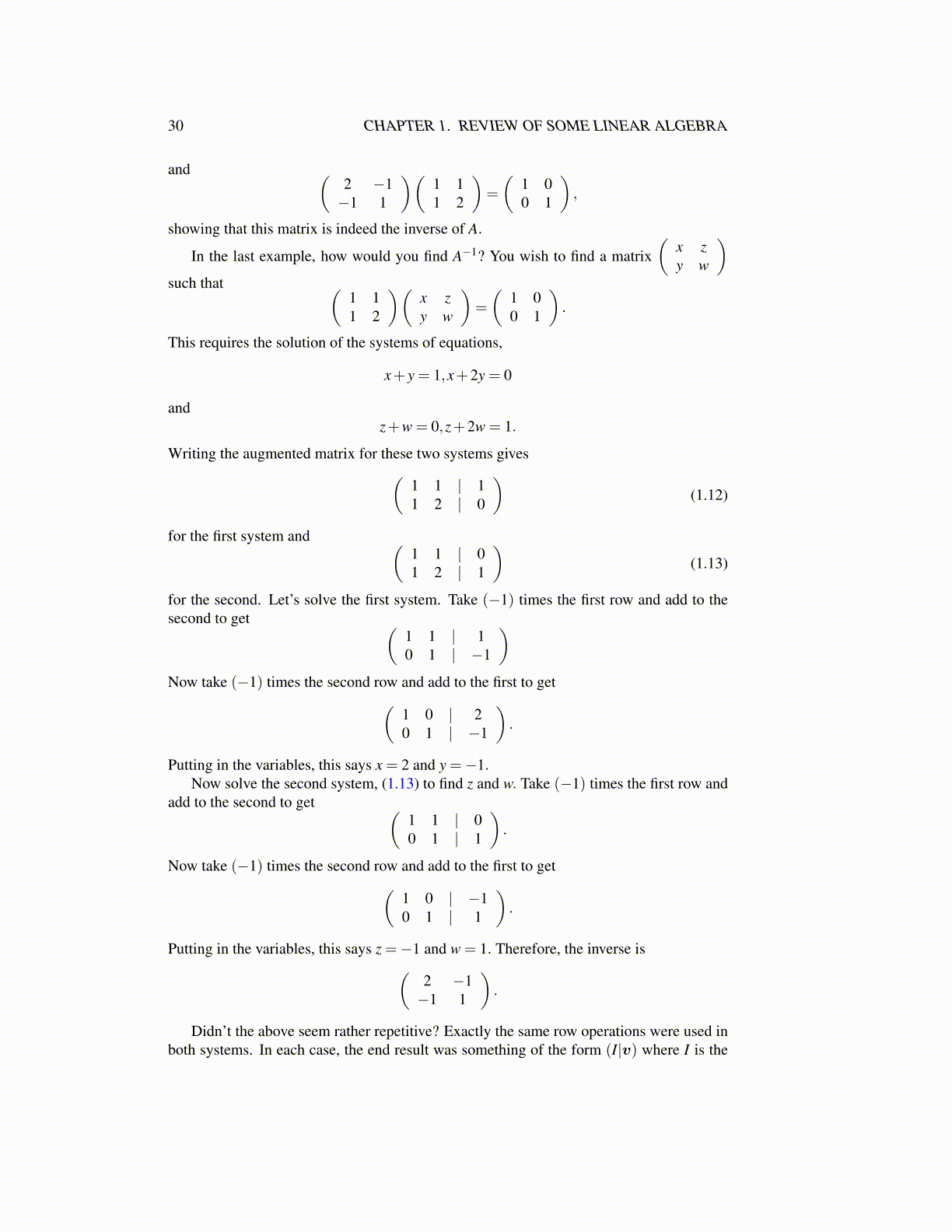
30 CHAPTER 1. REVIEW OF SOME LINEAR ALGEBRA
and (2 −1−1 1
)(1 11 2
)=
(1 00 1
),
showing that this matrix is indeed the inverse of A.
In the last example, how would you find A−1? You wish to find a matrix(
x zy w
)such that (
1 11 2
)(x zy w
)=
(1 00 1
).
This requires the solution of the systems of equations,
x+ y = 1,x+2y = 0
andz+w = 0,z+2w = 1.
Writing the augmented matrix for these two systems gives(1 1 | 11 2 | 0
)(1.12)
for the first system and (1 1 | 01 2 | 1
)(1.13)
for the second. Let’s solve the first system. Take (−1) times the first row and add to thesecond to get (
1 1 | 10 1 | −1
)Now take (−1) times the second row and add to the first to get(
1 0 | 20 1 | −1
).
Putting in the variables, this says x = 2 and y =−1.Now solve the second system, (1.13) to find z and w. Take (−1) times the first row and
add to the second to get (1 1 | 00 1 | 1
).
Now take (−1) times the second row and add to the first to get(1 0 | −10 1 | 1
).
Putting in the variables, this says z =−1 and w = 1. Therefore, the inverse is(2 −1−1 1
).
Didn’t the above seem rather repetitive? Exactly the same row operations were used inboth systems. In each case, the end result was something of the form (I|v) where I is the